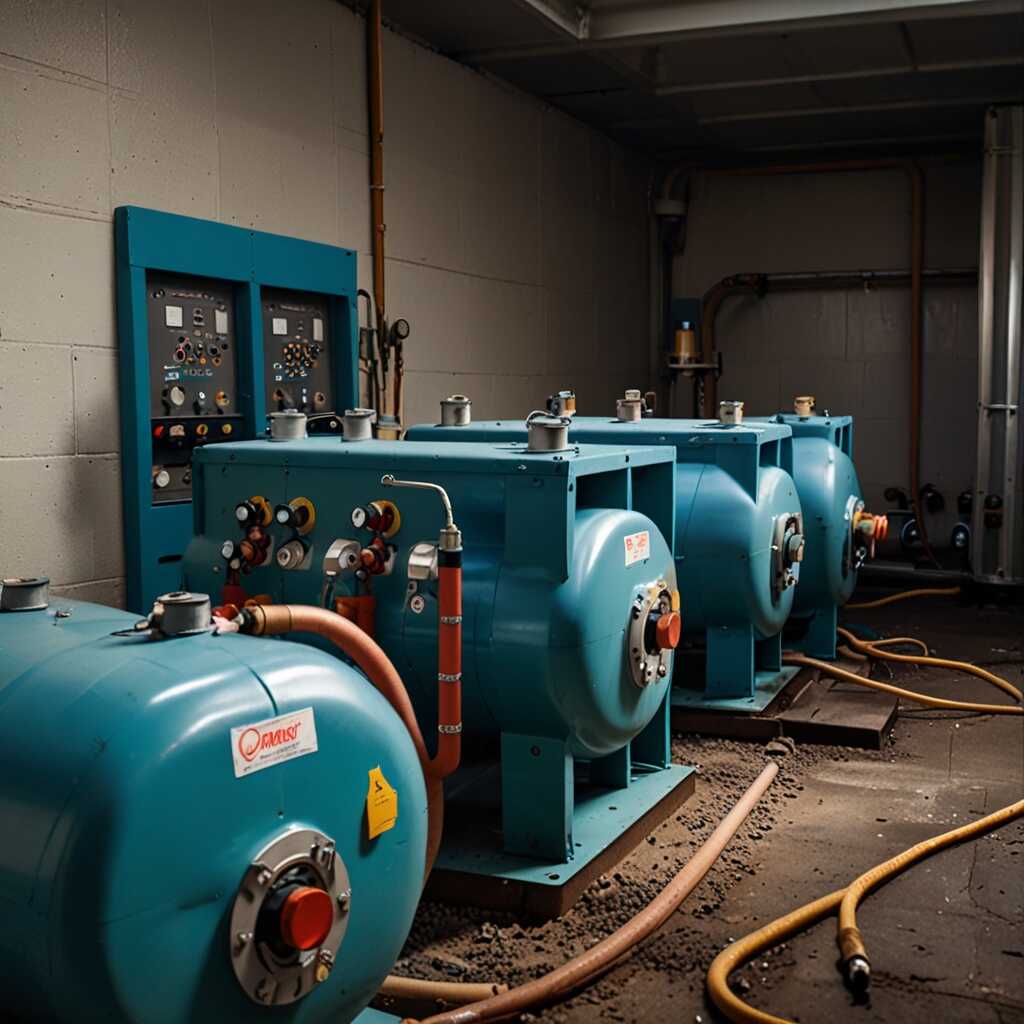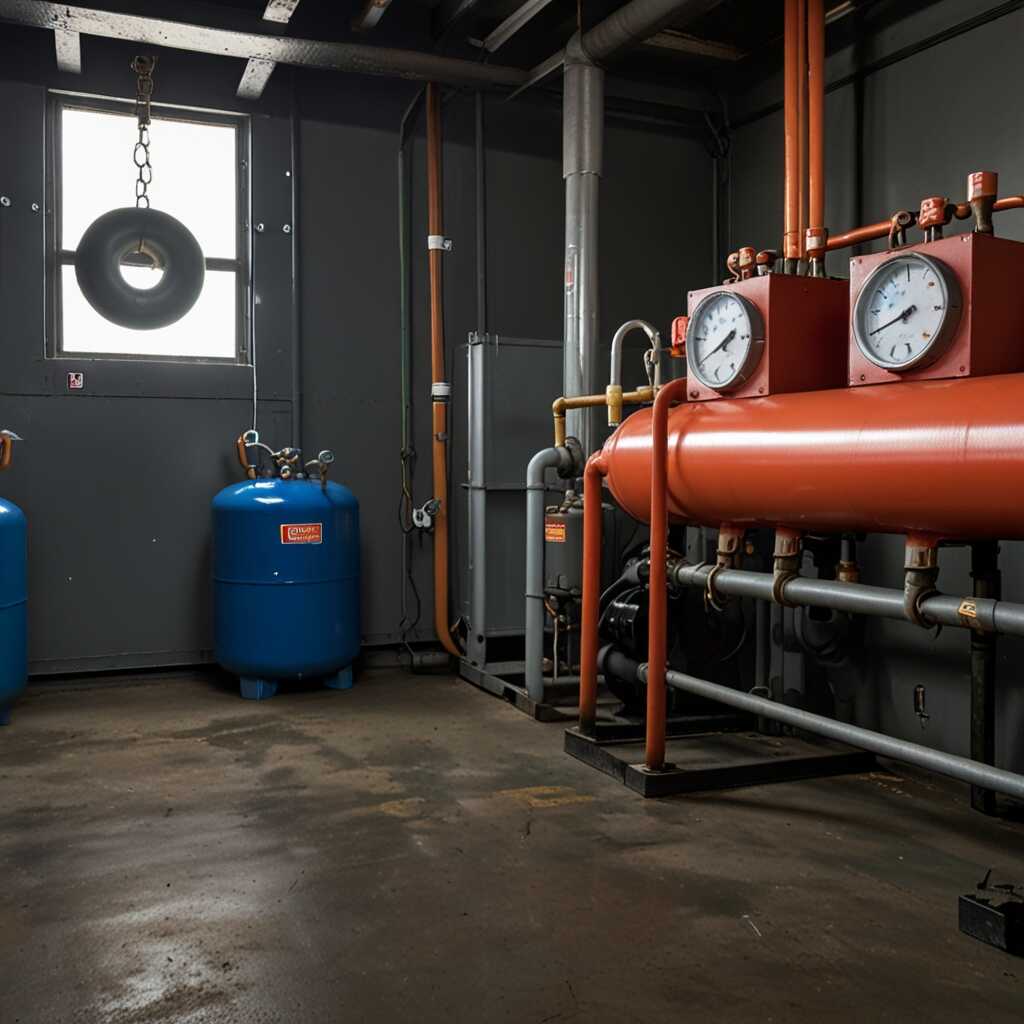Corrosion resistant components are essential for refrigerant recovery machines to enhance their longevity and performance. These components help prevent damage from harsh chemicals and moisture found in the refrigerants. By incorporating corrosion-resistant materials, HVAC professionals can improve efficiency and minimize maintenance costs. At Refrigerant Recovery Pro, we provide expert guidance on selecting and utilizing these crucial parts in HVAC applications.
Understanding Corrosion and Its Effects on Equipment Durability
Corrosion is the gradual degradation of materials due to chemical reactions, particularly in humid environments. It significantly impacts refrigerant recovery machines by reducing their reliability and durability. Factors like humidity, temperature fluctuations, and exposure to chemical refrigerants accelerate corrosion, leading to higher maintenance costs. Studies show that corrosion-related issues can account for over 30% of all maintenance expenses in HVAC systems. Therefore, using corrosion-resistant components becomes essential for ensuring long-term equipment performance.
Impact of Environmental Factors on Corrosion
The environment plays a crucial role in the rate of corrosion for refrigerant recovery machines. High humidity and temperatures can accelerate the deterioration of metal parts. Equipment made from stainless steel offers superior corrosion resistance compared to standard steel. Additionally, ensuring proper ventilation and reducing exposure to corrosive agents can enhance the performance and lifespan of HVAC equipment. Using environment-specific coatings helps mitigate corrosion and ensures reliability in harsh conditions.
Key Benefits of Using Corrosion-Resistant Materials in HVAC Systems
Corrosion-resistant materials enhance HVAC systems in several critical ways. First, they extend the service life of components, ensuring reliable performance over time. This durability reduces the chances of equipment failure, which contributes to less downtime during operations. Secondly, these materials help decrease maintenance costs by minimizing the frequency of repairs and replacements. HVAC professionals often find that investing in corrosion-resistant options leads to better overall system efficiency and reliability. The proven effectiveness of these materials is backed by extensive testing and industry reviews, making them an essential choice for quality-conscious contractors.
Understanding the Importance of Material Selection in HVAC Systems
Choosing corrosion-resistant materials for HVAC systems is crucial for maximizing performance and reliability. For instance, elements like condensers, evaporators, and piping can degrade quickly when exposed to harsh refrigerants and environments. Materials such as stainless steel and specialized coatings are designed to withstand these corrosive conditions. This selection process helps boost system efficiency as well, enabling components to operate optimally for longer periods. Research indicates that HVAC systems utilizing corrosion-resistant components can achieve maintenance cost reductions of up to 30% over their lifetimes. Refrigerant Recovery Pro emphasizes the value of making informed decisions when selecting equipment to ensure long-term success.

Popular Corrosion-Resistant Materials in Refrigerant Recovery Machines
Corrosion-resistant materials used in refrigerant recovery machines include stainless steel and specialized coated components. These materials outperform traditional options like aluminum and plain steel. Stainless steel is known for its excellent resistance to corrosion caused by refrigerants and moisture. Coated components offer an additional layer of protection, prolonging service life by resisting wear and tear. Using these advanced materials enhances the durability and reliability of recovery machines, leading to lower maintenance costs and improved performance.
Advantages of Stainless Steel Components in Recovery Machines
Stainless steel components provide superior corrosion resistance compared to standard metals. They can handle the harsh chemical environment present in HVAC applications effectively. Testing has shown that machines with stainless steel outperform those made from conventional materials, significantly extending their service life. With proper research, experts agree that applications using stainless steel can see improvements in durability by over 30%. This increased service life also translates to lower maintenance costs for HVAC professionals, ensuring that refrigerant recovery machines remain operational longer and more efficiently.
Key Statistics About Equipment Longevity and Maintenance
- Corrosion-resistant parts can last up to 30% longer than standard components.
- Units made with such materials may require 50% less frequent maintenance interventions.
- Repair costs for corroded components can exceed 20% of the purchase price.
- Approximately 70% of HVAC machinery failures relate to corrosion issues.
- Usage of corrosion-resistant materials can reduce downtime by an estimated 15%.
- Corrosion resistance leads to a 25% savings in long-term operational costs.
- Over a 10-year period, reliable parts can contribute to savings of up to $10,000 for businesses.

Enhancing Operational Efficiency with Corrosion-Resistant Components
Corrosion-resistant components greatly improve the reliability of refrigerant recovery machines. These materials resist wear and degradation, ensuring machines work efficiently over time. For example, using stainless steel or coated aluminum helps prevent rust, extending the life of essential parts. In HVAC systems, corrosion-resistant materials like these reduce downtime and maintenance costs significantly.
Understanding the Key Materials in Corrosion Resistance
Corrosion-resistant components in HVAC systems mainly include materials like stainless steel, aluminum alloys, and specialized coatings. Stainless steel offers excellent resistance to rust and corrosion, making it a top choice for refrigerant recovery machines. Aluminum alloys are lightweight and handle humidity well, minimizing wear. Specialized coatings, such as epoxy or powder coatings, enhance the durability of various parts while providing an additional protective layer against environmental stressors.

Evaluating the Cost Benefits of Corrosion-Resistant Equipment
The upfront costs of corrosion-resistant components are often higher compared to traditional alternatives, due to advanced materials and manufacturing processes. However, investing in these components can lead to significant long-term savings. Corrosion-resistant components enhance the reliability and performance of refrigerant recovery machines, reducing the risk of breakdowns and minimizing maintenance costs. This investment can improve efficiency, enabling HVAC professionals to operate systems at optimal levels. Studies show that the typical ROI period for these materials ranges from three to five years, depending on usage and environment.
Understanding Total Cost of Ownership in HVAC Systems
Evaluating total cost of ownership (TCO) is critical in making informed decisions about HVAC equipment. Corrosion-resistant components significantly reduce maintenance frequency and extend service life, which contributes to TCO. These components are designed to withstand harsh conditions, effectively lowering repair costs. Regular replacements of conventional materials not only increase expenses but also disrupt operations. Investing in corrosion-resistant components ensures HVAC systems maintain functionality, which enhances overall efficiency and reliability. Choosing quality materials can yield impressive performance and help professionals maximize their return on investment.
Advantages of Durable Materials in Mechanical Equipment
- Enhanced durability limits repairs and replacements due to rust damage.
- Corrosion-resistant components extend service life, benefiting HVAC professionals.
- Users experience fewer breakdowns and reduced operational interruptions.
- Lower maintenance costs translate to increased profit margins for technicians.
- Smoother operation leads to energy efficiency, saving on utility bills.
- Minimized corrosion improves safety for users and maintenance staff alike.
- Components provide better reliability, improving customer satisfaction ratings.

Essential Maintenance Practices for Corrosion-Resistant Systems
Careful maintenance of corrosion-resistant refrigerant recovery machines enhances reliability and extends service life. Start by regularly checking for leaks and corrosion signs. This routine helps ensure the best performance of your equipment. Utilize appropriate cleaning solutions for corrosion-resistant components to enhance their durability. Depending on usage, maintenance checks should typically occur every 3 to 6 months. Be mindful of operating conditions and the specific refrigerants used, as these factors can significantly affect maintenance needs. Regular testing ensures all components function efficiently, helping to prevent costly repairs and downtime.
Common Maintenance Tasks for Corrosion-Resistant Machines
Performing common maintenance tasks is vital for ensuring the reliability of corrosion-resistant refrigerant recovery machines. Regularly inspect and replace filters to maintain optimal airflow and efficiency. Periodically clean coils to prevent buildup that may impair performance. Check for proper fluid levels, as low levels can impact system efficiency. Additionally, ensure that seals and gaskets are intact to prevent refrigerant leaks. The effectiveness of these systems relies not only on their corrosion-resistant features but also on diligent upkeep. Following these maintenance procedures leads to noticeable improvements in the overall reliability and durability of your refrigerant systems.
Case Studies Highlighting Longevity Improvements
Several real-world case studies demonstrate how corrosion-resistant components in refrigerant recovery machines lead to substantial service life extensions. For example, a prominent HVAC company reported that their machines increased operational lifespan by up to 40% after incorporating corrosion-resistant materials. These companies achieved significant time and cost savings by enhancing efficiency and reducing the need for repairs. Another case involved a contractor who implemented these components across multiple job sites, resulting in a reduction of maintenance frequency and an overall 30% improvement in reliability.
Evaluating the Impact of Corrosion-Resistant Materials
Reviewing the impact of corrosion-resistant materials on refrigerant recovery machines reveals significant insights. When evaluating these components, it is essential to consider their ability to handle harsh environmental conditions. HVAC companies observed that machines built with these materials can consistently operate effectively in corrosive environments, such as those with high humidity or exposure to refrigerants. Testing and research indicated that these components not only enhance performance but also contribute to a longer service life. Many companies that reviewed or conducted comparisons noted lower overall maintenance costs, which makes them a valuable investment for HVAC professionals.
Brands and Applications in the Corrosion-Resistant Market
- Trane specializes in commercial systems, renowned for robust construction.
- Carrier offers residential solutions, featuring durable corrosion-resistant options.
- York provides reliable mid-range machines perfect for diverse applications.
- Quality of parts can vary, but each brand emphasizes longevity and reliability.
- Rheem focuses on environmentally friendly options that also resist corrosion.
- Common users include HVAC contractors and commercial building maintenance teams.
- Contractors benefit greatly from reliable machines that require less downtime.
Summarizing the Importance of Corrosion-Resistant Components
Investing in corrosion-resistant materials for HVAC components offers several long-term benefits. Corrosion-resistant materials significantly enhance the reliability and longevity of refrigerant recovery machines. This is crucial in environments prone to moisture and chemical exposure. Industries such as refrigeration, air conditioning, and HVAC can greatly benefit. Corrosion-resistant features reduce maintenance costs by up to 30%, making these materials essential for efficient operations. A well-designed system with these materials provides increased performance and durability over time.
Why Corrosion-Resistant Materials Matter for HVAC Systems
Corrosion-resistant materials are essential for HVAC systems, especially in refrigerant recovery machines. These materials can withstand harsh environments and the effects of various refrigerants. Regular equipment maintenance is easier since corrosion-related failures are reduced. Studies show that systems using corrosion-resistant components can last up to 15 years longer. This durability translates to significant cost savings, as fewer repairs and replacements are needed. Additionally, they increase overall system efficiency, ensuring dependable performance and compliance with industry standards.